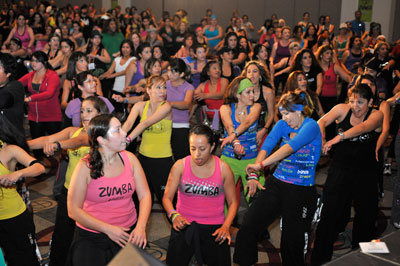By IHRSA
Last week’s entry, “Healthy Choices Require Healthy Options,” articulated well the “need to make the healthy choice the easy choice by ensuring that our communities have adequate opportunities for children, families and adults to engage in healthy behaviors in all of the places where they live, work, learn, and play.” Those opportunities include pedestrian/biker friendly streets, safe parks and playgrounds, and paths for walking and biking. At workplaces, employers may provide a cardio break room, a health club membership subsidy, or safe walking paths.

But providing healthy options is only part of the solution for changing behavior.
Once you’ve provided a healthy option, you then have to convince folks to actually choose the healthy option.
There are “nudges,” of course, that make the healthy choice the more likely choice, such as making the healthy option the default option or making the healthy option less expensive than the alternative. Nudges work well when a choice between two or more similar actions is required (e.g. what to buy for lunch at a work cafeteria). But nudges aren’t as effective for a problem like physical activity where an individual typically chooses between moving and not moving, rather than choosing between two or more types of activity.
There is emerging evidence, however, that social networks and cultural norms play a powerful role in our decision to be physically active. For example, when the people around us are trying to lose weight, we may be more likely to try to lose weight. And, conversely, research suggests that obesity can also spread through social circles.
In the fitness industry, this social phenomenon is evidenced by the growing popularity of “small group” personal training, which ranks #5 on IHRSA’s Top Health Club Trends for 2012. The small group sessions create supportive networks of people who motivate one another and keep each other accountable. Perhaps, more importantly, the small groups create micro-cultures of health that encourage individuals to be physically active as a means to conform to the social norm of the culture.
A similar dynamic can play out at worksites that embrace the benefits of physical activity. A recent study of a physical activity-based wellness program implemented at New Balance corporate offices found that “53 percent [of survey respondents] said they increased their level of physical activity and movement at work.” As explained by New Balance, “[the] program enhanced our workplace environment by engaging our associates to collaborate in new ways to increase their energy and focus levels.”
On an even larger scale, the Oklahoma City mayor, Mick Cornett, has built a healthier community by changing the city’s social norms with his “This City is Going on a Diet” initiative, which reached its goal of losing, collectively, 1 million lbs.
Once a community has created healthy options, what are some ways that community leaders can harness the power of social networks and cultural norms to entice folks to make the healthy choice?